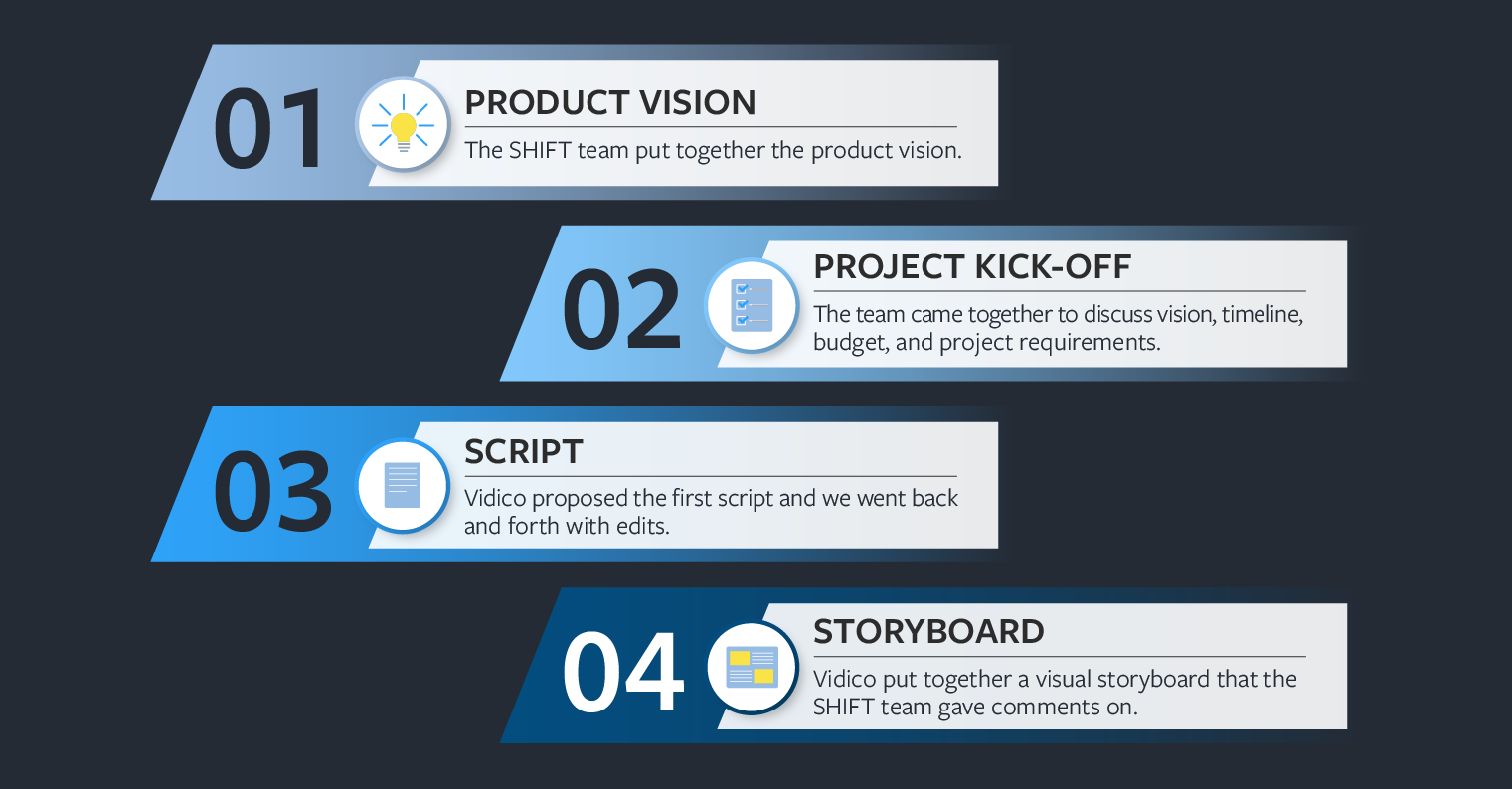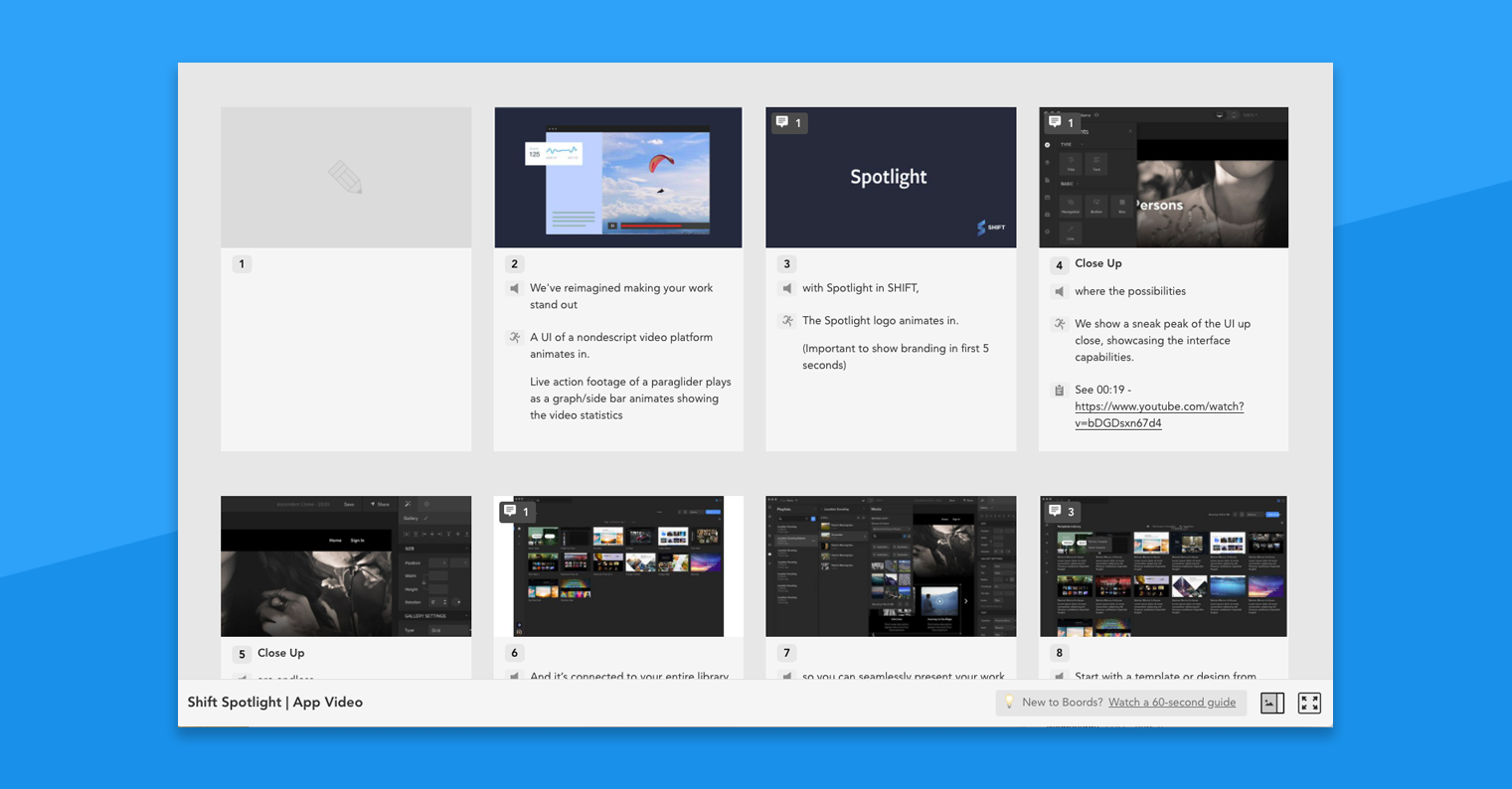
When it comes to making a standout product video, finding the right team and the right workflow is key. At MediaSilo, we worked with a number of production teams before we found our fit with Vidico, a full-service production company based out of Melbourne, Australia, specializing in brand and product videos for technology companies. Over the course of several successful video projects together, we developed a plan that worked seamlessly at each stage of the creative process.
The pre-production phase can be the most crucial stage of the entire video creation process to ensure a quality final product that matches your vision and brand.
This year, the MediaSilo and Vidico teams came together to produce the launch video for our latest feature Spotlight, a fully customizable site-builder within MediaSilo, to present and showcase your work with branded microsites and presentations. Project leads Tim, Producer at Vidico, and myself, Product Marketing Manager at MediaSilo, put our heads together to share these four best practices for producing successful product videos.
1. Prioritize the pre-production phase
The pre-production phase can be the most crucial stage of the entire video creation process to ensure a quality final product that matches your vision and brand. This is the stage where you gather the team for brainstorming, and hash out any creative differences. From a cost standpoint, it’s much easier to change a sketch or PNG file than it is to change an entire animation.
Our pre-production phase looked like this:

The script and storyboard phases are where the marketing team will want to really hone the details. We used Dropbox Paper to collaborate on the script, where we documented important project information and made use of commenting features to communicate asynchronously. Then, the Vidico team translated the written script into a visual storyboard using Boords, where the MediaSilo team was able to comment directly on individual slides.

With Boords, the MediaSilo team was able to make notes on individual storyboard slides.
When MediaSilo brought their product expertise and brand vision to the table in a clear and concise way, Vidico was easily able to propose creative to fit the bill. Once the storyboard is finalized and off to production, it’s mostly up to the animation team to bring the story to life.
2. Identify your stakeholders for each stage of the project
For a big launch like this, teams across the company will need to be aligned to balance the number of cooks in the kitchen. Not everyone needs to have a say on the color of the text or minor design details, but all key stakeholders should be looped in to provide input on the overall direction and messaging of the script and visuals.
Your stakeholders should include leaders from Product, Sales and Success teams who can help identify key “marketing features” that will hook prospects in.
Your stakeholders should include leaders from Product, who can help outline the overall direction of product messaging, and leaders from Sales and Success teams who can help identify key “marketing features” that will hook prospects in. Early on, the MediaSilo team identified its product stakeholders as our VP of Product and CEO, and its go-to-market stakeholders as the VP of Sales and Director of Enterprise Success.
We checked in with our internal stakeholders at each stage — briefing, scripting, and storyboarding — and made sure to over-communicate to avoid delays.
3. Establish project leads on each team

We created a shared Slack channel for the MediaSilo and Vidico teams to stay in touch on a daily basis.
Tim and I divvied up responsibilities at the beginning of their project to make sure both teams were on the same page.
- Jane (Product Marketing) was responsible for developing the project vision from the MediaSilo team, organizing and facilitating project meetings, gathering timely feedback from stakeholders, and establishing feedback protocols at each stage of the project.
- Tim (Producer) was responsible for keeping the project on time and budget, ensuring timely delivery at each stage of the project, as well as managing the creative and animation team at Vidico.
Since our teams were working across a 16-hour time difference (!), it was important to find a way to communicate quickly and efficiently. To solve this, MediaSilo and Vidico created a shared company Slack channel that we could all access from our own MediaSilo and Vidico workspaces. We took advantage of threads for sidebar conversations about details, and Jane and Tim made sure to broadcast channel-wide messages for record-keeping or when hopping on a call wasn’t possible.
4. Keep all your files and feedback in one place
There’s nothing quite as satisfying as using our own app to wrap a project. We created a dedicated project in MediaSilo that all project members had access to, and a subfolder for the Spotlight video.

We leveraged the time-coded review features in MediaSilo to make drawings and comments right on the video and track changes across versions.
The Vidico team would animate the project into life using Adobe After Effects (which MediaSilo now integrates with) and Tim would share the latest cuts as a secure link for the MediaSilo team to comment on in a 2-day turnaround window. We went through a few review cycles, first on the overall flow, music, animation edits, and finally some color and design tweaks.

Vidico’s animation team worked in Adobe After Effects, which MediaSilo now integrates directly with.
The Finished Product
With the right team, workflows, and tools, putting together a product video can truly level up your product launch, attracting the prospects you want and enabling your Sales and Success teams to do their jobs.
Get started with a trial of MediaSilo today to streamline your team’s video collaboration. And, if you’re looking for more best practices like these, subscribe to our blog and we’ll send them straight to your inbox.





